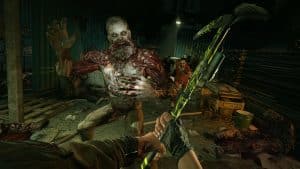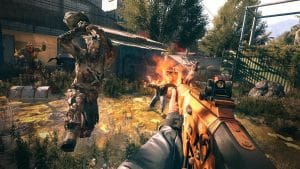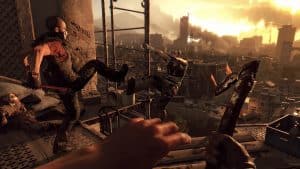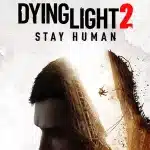Dying Light
Related Games
Description
🔥 What is Dying Light?
Dying Light is an expansive open-world first-person action survival game developed by Techland and published by Warner Bros. Interactive Entertainment. Released in 2015, it quickly earned a reputation as one of the most innovative titles in the zombie genre, thanks to its seamless blend of free-flowing parkour mechanics, an intense and dynamic day-night cycle, visceral melee combat, and a gripping narrative. Set in the fictional quarantined city of Harran, players take on the role of Kyle Crane, an undercover operative tasked with infiltrating a city ravaged by a deadly viral outbreak that has transformed much of its population into horrific, flesh-hungry creatures.
Unlike many conventional zombie games, Dying Light stands out for its unique focus on player mobility, blending free-running with brutal first-person combat. The result is a highly dynamic gameplay loop where players are constantly balancing their survival instincts, movement, and combat prowess, all while navigating a complex story filled with political intrigue, desperate survivors, and tough moral choices.
👉 Features of Dying Light
Revolutionary Parkour-Based Movement System
Dying Light redefines movement in the open-world survival genre by introducing an intuitive parkour system that allows players to freely scale buildings, vault over obstacles, and leap across rooftops with ease. This vertical freedom transforms Harran into a living playground, where creativity in traversal becomes as crucial as combat itself. Mastering these movements is not only satisfying but also often essential for survival.
Immersive Day-Night Cycle with Shifting Gameplay
The dynamic day-night cycle in Dying Light dramatically alters the gameplay experience. By day, players explore the city, scavenge for resources, and battle standard infected with relative safety. But as night descends, the stakes escalate exponentially. More dangerous predators, like the terrifying Volatiles, emerge from hiding, forcing players to adopt stealth and careful planning. This constant transition between safety and terror adds a thrilling tension to every in-game hour.
Brutal and Satisfying Melee Combat
Combat in Dying Light centers around close-quarters melee, delivering weighty, visceral encounters. Players wield an extensive array of blunt and bladed weapons that can be crafted and enhanced with elemental modifications such as fire, electricity, and toxins. The physical feedback from strikes, enemy reactions, and environmental kills makes each combat encounter feel intense and rewarding.
Deep and Engaging Crafting System
The survival aspect of Dying Light is enriched through its comprehensive crafting system. Scavenging the environment yields materials that can be used to build medkits, traps, explosives, and weapon upgrades. This crafting element encourages exploration and strategic preparation, ensuring players are constantly improving their chances of survival.
Expansive RPG-Style Skill Trees
Character progression in Dying Light is driven by a trio of skill trees: Survivor, Agility, and Power. Each branch caters to a different aspect of gameplay, allowing players to specialize in parkour, combat, or survival efficiency. The progression system rewards diverse playstyles and enables players to tailor their experience as they evolve into a more capable survivor.
Comprehensive Co-Op Multiplayer Experience
Dying Light supports up to four-player cooperative multiplayer, enabling players to explore Harran together. Co-op enhances every aspect of the game, from exploration to mission execution and combat coordination. The inclusion of multiplayer adds not only replayability but also new levels of strategy and fun.
Asymmetrical “Be The Zombie” PvP Mode
In this unique multiplayer mode, one player controls a formidable Night Hunter, invading other players’ sessions to hunt and eliminate them. This competitive mode adds an unpredictable edge, forcing players to adapt their strategies against a highly mobile and lethal human-controlled adversary.
Extensive Post-Launch Support and DLC
Beyond its initial release, Dying Light received extensive updates and expansions, such as The Following, which introduced drivable vehicles, new storylines, and a vast countryside map, further expanding the scope and longevity of the game.
Gameplay
Exploration and Vertical Open-World Freedom
Harran’s open-world environment is densely packed with detailed districts, including urban centers, dilapidated slums, and suburban outposts. The vertical design encourages players to scale towering buildings and navigate rooftops, transforming exploration into an exhilarating, multi-dimensional experience. Every structure becomes a potential route or escape point.
Tense Daylight Operations vs. Nighttime Horror
During the day, players face standard infected, hostile human factions, and volatile environments. At night, the game shifts dramatically into a high-stakes horror survival mode. Volatiles dominate the streets, turning simple errands into nerve-wracking, pulse-pounding runs where one wrong move can mean instant death. The night cycle’s risk-reward structure encourages players to weigh the benefits of nighttime exploration against the heightened danger.
Strategic and Tactical Combat Encounters
Combat is strategic, with an emphasis on movement, precision, and environmental awareness. Players can exploit hazards like spiked barricades, dangling traps, and explosive barrels to dispatch enemies efficiently. The need for careful resource management and weapon durability adds an additional tactical layer to every fight.
Rich Narrative with Moral Complexity
The storyline is filled with political intrigue, factional conflicts, and ethical dilemmas. Players must navigate relationships with survivors, make difficult moral choices, and face the consequences of their actions. Side quests add depth, often introducing personal stories of tragedy and resilience that flesh out the world’s lore.
Resource Scarcity and Survival Challenge
Scarcity of essential supplies such as medkits, crafting ingredients, and rare weapon components heightens the sense of desperation. Players are encouraged to thoroughly scavenge their surroundings, balance crafting priorities, and strategically conserve their resources to survive the harsh conditions.
Personalized Skill Development
The skill progression system allows players to craft unique builds that suit their preferred playstyle. Whether focusing on stealthy, acrobatic traversal, brute-force melee dominance, or crafting and survival, the choices made in skill allocation significantly shape each player’s journey through Harran.
Graphics of Dying Light
Highly Detailed Urban Apocalypse
The decaying cityscape of Harran is brought to life through meticulous attention to environmental details. Crumbling architecture, overgrown vegetation, abandoned vehicles, and intricate interior spaces create an authentic post-apocalyptic setting that feels immersive and dangerous.
Atmospheric Lighting and Dynamic Weather Effects
The dynamic lighting engine excels during the night cycle, where visibility becomes a constant concern. Moonlight, flickering neon signs, and flashlight beams create an oppressive, chilling atmosphere. Weather systems, including rainstorms and fog, enhance the sense of immersion and tension.
Smooth Animations and Impactful Combat Feedback
Character animations during parkour and combat are fluid, natural, and highly responsive. The forceful impacts during melee fights convey a visceral sense of power and danger, while enemy ragdoll physics and reaction animations heighten the realism.
Diverse and Disturbing Enemy Designs
The variety of infected enemies showcases Techland’s commitment to horror design. From shambling Biters to monstrous Volatiles, each enemy type is distinct, grotesquely detailed, and capable of inducing fear. The horrifying transformations add to the game’s unsettling atmosphere.
Impressive Vertical Scope and Draw Distance
The game’s vertical design is complemented by a remarkable draw distance, allowing players to take in panoramic views of Harran’s skyline, spot potential safe zones, and plan their next moves from high vantage points.
Pros and Cons
✔️ Pros
- Exceptional Parkour System: Seamless movement elevates exploration and combat tactics.
- Gripping Day-Night Cycle: Constantly evolving gameplay dynamics keep tension high.
- Extensive Crafting Options: Versatile customization for weapons, tools, and survival gear.
- Highly Engaging Co-Op: Multiplayer adds longevity, camaraderie, and tactical depth.
- Intense Melee Combat: Visceral, satisfying battles against both human and infected threats.
- Expansive Narrative: Main story and side quests offer emotional depth and world-building.
- Stunning Visuals: Atmospheric lighting, detailed environments, and eerie ambiance.
- Excellent Post-Launch Support: Continued updates, expansions, and community engagement.
❌ Cons
- Steep Learning Curve: Mastery of movement and combat takes practice.
- Repetitive Side Quests: Some missions may feel formulaic over time.
- Technical Glitches: Occasional bugs can disrupt immersion.
- Weapon Durability Frustration: Constant weapon breakage may annoy some players.
ℹ️ Game information
⭐ Installation Instructions
- The game is fully complete, you just need to install it, so there is no need to unpack it or download it from other sources.
- Just run the Dying Light.exe installation file.
- Simply launch the game from shortcut desktop.
⚙️ System Requirements
✅ Minimum:
- OS: Windows 8.1 64-bit
- Processor: Intel® Core™ i5-2500 @3.3 GHz / AMD FX-8320 @3.5 GHz
- Memory: 4 GB RAM
- Graphics: NVIDIA® GeForce® GTX 560 / AMD Radeon™ HD 6870 (1GB VRAM)
- DirectX: Version 11
- Network: Broadband Internet connection
- Storage: 40 GB available space
✅ Recommended:
- OS: Windows 8.1 64-bit
- Processor: Intel® Core™ i5-4670K @3.4 GHz / AMD FX-8350 @4.0 GHz
- Memory: 8 GB RAM
- Graphics: NVIDIA® GeForce® GTX 780 / AMD Radeon™ R9 290 (2GB VRAM)
- DirectX: Version 11
- Network: Broadband Internet connection
- Storage: 40 GB available space
Images









